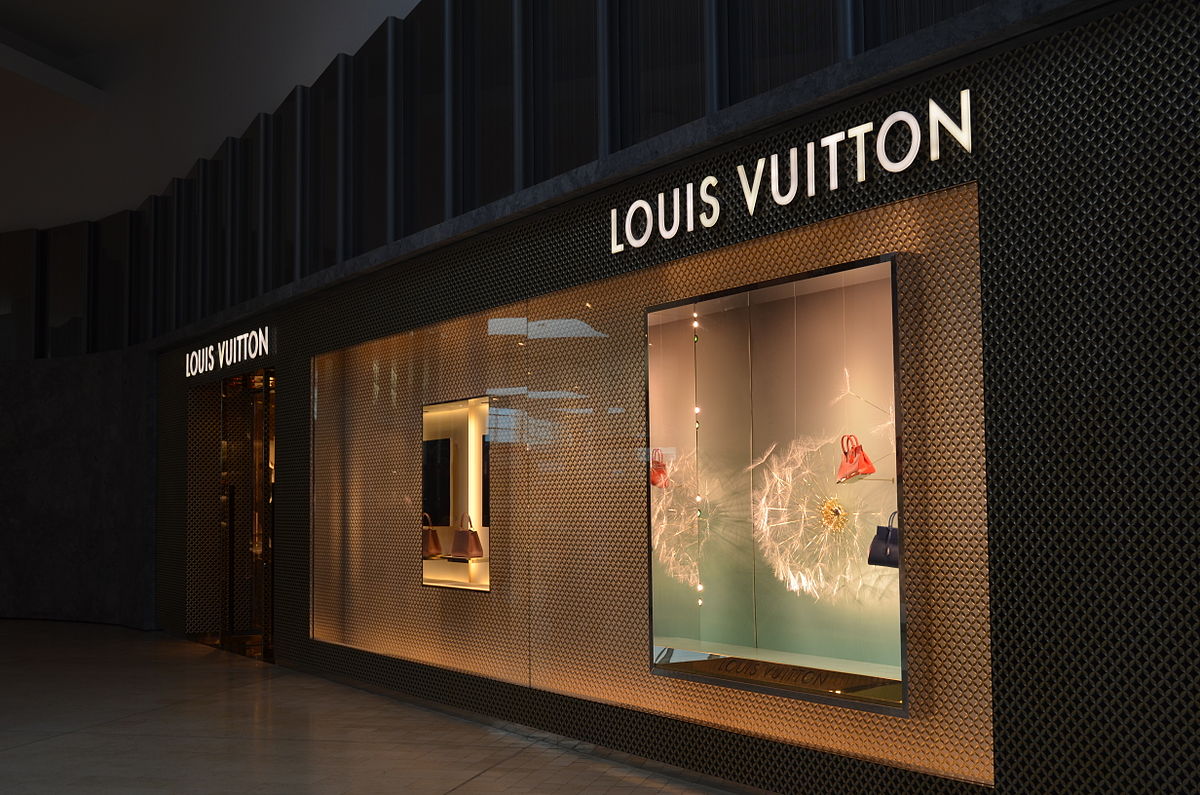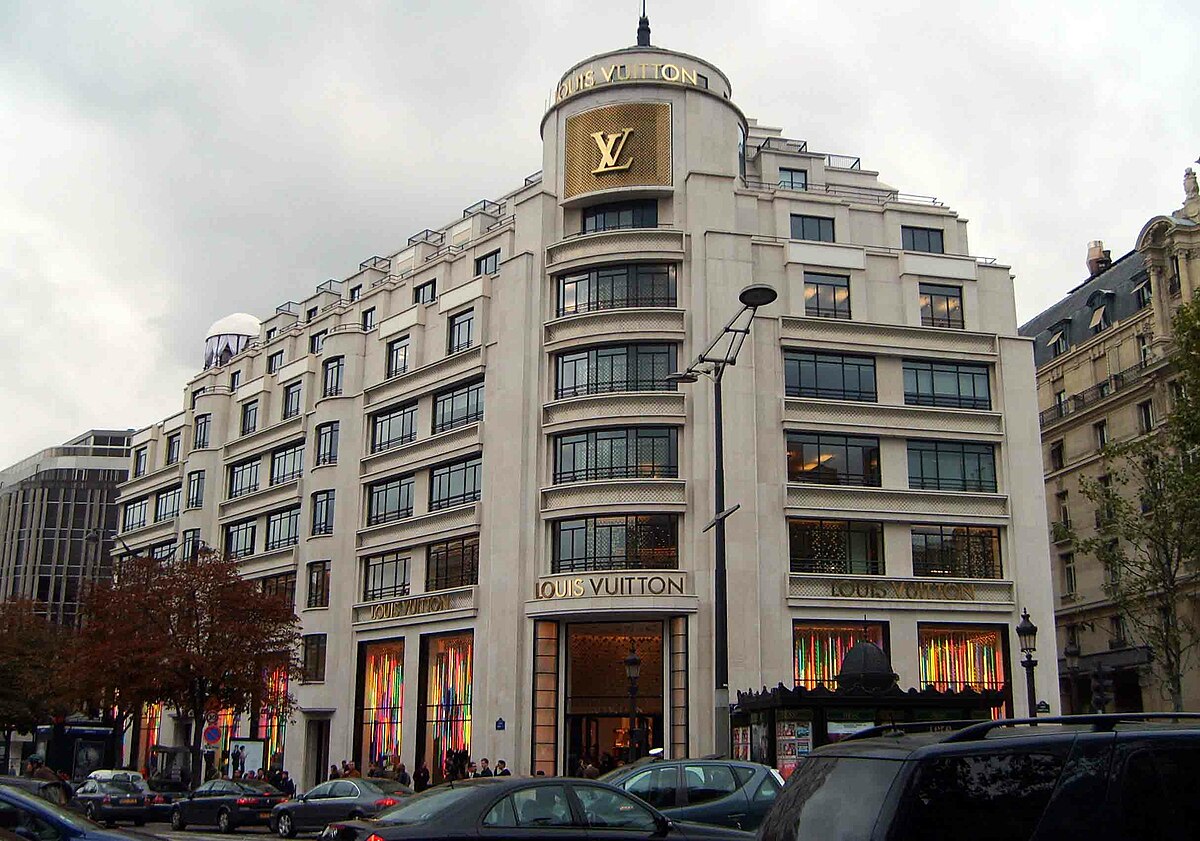Louis Vuitton stands as a towering figure in the luxury fashion industry recognized globally for its distinctive monogrammed handbags, exquisite luggage pieces, and high-end fashion items. Since its inception in 1854, the brand has evolved from a specialized luggage maker to a symbol of luxury and sophistication. This transformation didn’t happen overnight; it was a result of continuous innovation, commitment to quality, and an understanding of the evolving desires of the luxury consumer.
This article aims to explore the journey of Louis Vuitton, tracing its roots from a small workshop in Paris to becoming a global fashion empire. We’ll look at key milestones, iconic products, and the visionary designers who have shaped its legacy. Through this exploration, we’ll gain insights into how Louis Vuitton has maintained its status as a leading luxury brand in the competitive world of high fashion.
The Origins of Louis Vuitton
The story of Louis Vuitton began in 1854 when Louis Vuitton Malletier opened his first store in Paris on Rue Neuve des Capucines. Coming from a humble background with a history of working as a box-maker and packer, Vuitton’s early experiences profoundly shaped his vision for the brand. He recognized the need for reliable, high-quality travel goods in an era when travel was becoming increasingly popular and accessible to the upper classes. His commitment to craftsmanship and functionality laid the foundation for what would become a global luxury brand.
Innovation in Luggage Design
Louis Vuitton’s initial breakthrough came with the introduction of flat-topped trunks made of Trianon canvas, a significant departure from the traditional round-top designs that were prevalent at the time. These trunks were lightweight, airtight, and, most importantly, stackable, making them incredibly practical for the new modes of travel, like trains and steamships. This innovation not only set the brand apart from its competitors but also established Louis Vuitton as a symbol of innovation in the luxury goods market.
The Customization Era
In response to the growing demand from high-profile clients, Louis Vuitton began offering personalized services, customizing trunks to meet the specific needs and tastes of its clientele. This bespoke approach helped build intimate relationships with customers, further solidifying the brand’s reputation for exclusivity and personalization. It was during this time that Louis Vuitton’s signature gray Trianon canvas was introduced, which quickly became a symbol of quality and luxury.
Growth and Expansion
Following the success of his initial store, Louis Vuitton expanded his operations, opening a larger workshop in Asnières-sur-Seine in 1859. This workshop became the heart of the brand’s manufacturing process, where the finest materials were transformed into luxury goods by skilled artisans. The expansion was not just physical; the brand’s product range also grew to include a variety of luggage styles and sizes, catering to the diverse needs of travelers in the late 19th century.
The origins of Louis Vuitton are marked by innovation, quality, and a deep understanding of the needs of the luxury traveler. These early years laid a strong foundation for the brand, with each decision and innovation bringing Louis Vuitton closer to its status as a symbol of luxury fashion.
Breakthrough Innovations
The ascendancy of Louis Vuitton in the luxury fashion world is punctuated by a series of pioneering innovations that not only distinguished its products but also redefined the luxury goods industry. These innovations reflect the brand’s commitment to quality, functionality, and aesthetic appeal.
The Trianon Canvas and the Fight Against Counterfeits
In 1858, Louis Vuitton introduced the Trianon canvas, a revolutionary material that was lightweight, durable, and waterproof. The beige and brown striped canvas quickly became synonymous with the brand, setting a new standard for travel goods.
The Trianon Canvas’s success led to a surge in counterfeit products. In response, Louis Vuitton undertook its first battle against counterfeiting, a challenge that continues to shape its strategies today.
The Innovation of the Monogram
In 1896, Louis’s son, Georges Vuitton, created the iconic LV Monogram Canvas. Featuring the initials ‘LV’ along with floral and geometric motifs, the design was a tribute to his father and a bold move to prevent counterfeiting. The Monogram Canvas became more than just a material; it was a symbol of luxury, exclusivity and a hallmark of genuine Louis Vuitton products.
Revolutionary Lock System
In 1886, Georges Vuitton revolutionized luggage security with the introduction of a single lock system with two spring buckles. This innovation not only enhanced the practicality of travel goods but also added an extra layer of security, attracting the elite clientele who valued the safety of their belongings during travel.
The Wardrobe Trunk
The Wardrobe Trunk, introduced in the early 20th century, was designed to allow travelers to hang their clothes in a compact and convenient manner. This innovation catered to the needs of the affluent travelers of the time, combining functionality with luxury.
Louis Vuitton’s journey to becoming a symbol of luxury fashion is marked by a series of breakthrough innovations that have redefined the boundaries of design, functionality, and brand identity. From the Trianon Canvas to the iconic Monogram and the innovative lock system, each innovation has played a crucial role in establishing Louis Vuitton’s reputation as a leader in the luxury goods market. These innovations not only addressed the practical needs of travelers but also elevated the aesthetic appeal of travel goods, transforming them into coveted symbols of status and luxury.
The Monogram Canvas
The introduction of the Monogram Canvas by Louis Vuitton is a landmark event in the history of luxury fashion, symbolizing the brand’s innovative spirit and its commitment to exclusivity and identity.
The Genesis of the Monogram
- Design Inspiration: The Monogram Canvas was introduced in 1896 by Georges Vuitton, Louis Vuitton’s son, as a tribute to his late father. The design features the iconic LV initials interlocked with floral and geometric patterns, inspired by the Victorian trend towards intricate, ornate designs.
- Aim to Deter Counterfeits: This distinctive pattern was not only a design innovation but also a strategic move to combat the rampant counterfeits that began to surface following the success of Louis Vuitton’s designs. The intricate pattern of the Monogram Canvas was difficult to replicate, making it an effective tool against imitation.
Cultural and Fashion Significance
- Icon of Luxury: Over time, the Monogram Canvas evolved to become more than just a material used in luggage and bags; it became an emblem of luxury, recognized globally. Its distinctive pattern is instantly associated with the Louis Vuitton brand, symbolizing status, sophistication, and quality.
- Versatility in Fashion: The Monogram Canvas has been adapted to a wide range of Louis Vuitton products, including handbags, wallets, accessories, and even clothing. This versatility demonstrates the timeless appeal of the monogram and its ability to transcend traditional fashion boundaries.
Innovation and Adaptation
- Adapting to Modern Trends: Louis Vuitton has continually innovated with the Monogram Canvas, introducing variations in color, size, and combination with other materials. These adaptations reflect the brand’s responsiveness to changing fashion trends and consumer preferences, ensuring the Monogram remains relevant and desirable.
- Collaborations and Limited Editions: The brand has collaborated with numerous artists and designers to reinterpret the Monogram in various limited-edition collections. These collaborations infuse the iconic pattern with fresh perspectives, further cementing its status in the fashion world.
The Monogram Today
Today, the Monogram Canvas is as iconic as ever, representing a blend of tradition and modernity. It continues to be a cornerstone of Louis Vuitton’s product range, embodying the brand’s rich heritage and ongoing commitment to luxury and innovation. It represents the brand’s journey from a humble luggage workshop to a global luxury fashion powerhouse, maintaining its relevance through continuous innovation and adaptation to the evolving luxury market.
Expansion Beyond Luggage
Louis Vuitton’s expansion beyond luggage into handbags, accessories, and ready-to-wear fashion marked a significant turning point in the brand’s history, transforming it from a specialist luggage manufacturer into a comprehensive luxury fashion house.
- Introduction of Handbags: The foray into handbag design began with the Keepall bag in the 1930s, a lighter, more flexible version of the traditional luggage pieces. This was followed by the introduction of smaller, more practical bags, such as the Speedy and the Noé, catering to everyday use and marking Louis Vuitton’s initial steps into the broader world of fashion accessories.
- Ready-to-Wear Collections: The 1990s saw a significant expansion with the launch of Louis Vuitton’s first ready-to-wear clothing line under the artistic direction of American designer Marc Jacobs. This move further diversified the brand’s product offering and cemented its status as a luxury fashion brand, not just a luggage manufacturer.
- Accessories and Other Offerings: Alongside clothing, Louis Vuitton introduced a wide range of luxury accessories, including scarves, belts, sunglasses, and jewelry. These items complemented the existing product lines and allowed customers to experience the brand’s luxury and craftsmanship across a broader spectrum of fashion items.
- Flagship Stores: As part of its expansion, Louis Vuitton strategically opened flagship stores in major cities worldwide, including Paris, London, New York, and Tokyo. These stores are not just retail spaces but landmarks that represent the brand’s luxury and grandeur, attracting customers from all over the globe.
Louis Vuitton’s expansion beyond luggage into the realms of handbags, fashion, and accessories represents a strategic evolution of the brand, allowing it to cater to a wider array of luxury consumers’ needs. This diversification has not only solidified Louis Vuitton’s position as a leading luxury fashion house but also enriched its legacy, demonstrating its capacity for innovation and its ability to adapt to the changing landscapes of luxury fashion.
Iconic Products and Collections
Louis Vuitton’s ascent to the pinnacle of luxury fashion is punctuated by its creation of iconic products and collections that have transcended time and trends, becoming symbols of status and sophistication.
- Speedy Bag: Originally introduced in the 1930s as a travel case named the “Express” and inspired by the era’s rapid transit, the Speedy bag was reimagined as a handbag due to its popularity. It’s known for its versatility, lightweight design, and the classic Monogram Canvas. The Speedy bag became an instant classic, favored by celebrities and fashion enthusiasts alike for its elegant yet practical design. Its enduring popularity makes it a staple item in many luxury collections.
- Neverfull Tote: Launched in 2007, the Neverfull tote quickly lived up to its name as a spacious, stylish bag capable of holding all essentials. Its design caters to modern needs while maintaining Louis Vuitton’s signature aesthetic. The Neverfull is celebrated for its versatility, serving as both a daily carryall and a fashionable statement piece. Its popularity is a testament to Louis Vuitton’s ability to blend functionality with high fashion.
- Alma Bag: The Alma bag, with its distinctive dome shape, was first introduced in the 1930s. Its design was inspired by the Art Deco movement, reflecting the era’s fascination with geometric forms and elegance. The Alma bag’s timeless design has seen various reinterpretations over the years, including different sizes, colors, and materials, ensuring it remains relevant and coveted within the fashion community.
Collaborations and Limited Editions
Louis Vuitton has a history of collaborating with artists and designers to create limited-edition collections that merge fashion with art. Collaborations with Stephen Sprouse, Takashi Murakami, and Jeff Koons, among others, have produced unique, collectible pieces that highlight the brand’s creative and innovative spirit.
These collaborations have not only introduced fresh perspectives to Louis Vuitton’s traditional designs but have also attracted a new audience, further solidifying the brand’s place in the luxury fashion industry.
Trunks and Luggage
The foundation of Louis Vuitton’s legacy, its trunks and luggage pieces, remain emblematic of the brand’s dedication to craftsmanship and innovation. From custom trunks to iconic steamer bags, these pieces reflect the brand’s journey from a bespoke luggage maker to a global luxury icon. Louis Vuitton’s trunks have been featured in exhibitions and collections worldwide, celebrated not just as travel items but as works of art that encapsulate a rich history of travel, luxury, and design.
Louis Vuitton’s iconic products and collections stand as testaments to the brand’s enduring appeal and its ability to stay at the forefront of luxury fashion. From the practical elegance of the Speedy bag to the artistic collaborations that push the boundaries of design, each piece tells a story of innovation, craftsmanship, and timeless style.
The Role of Creative Directors
The evolution of Louis Vuitton into a comprehensive luxury fashion house has been significantly influenced by the vision and creativity of its creative directors. These individuals have played pivotal roles in steering the brand’s aesthetic direction, expanding its product lines, and integrating contemporary art and culture into its designs.
Marc Jacobs
Marc Jacobs joined Louis Vuitton in 1997 as its first creative director for the ready-to-wear line, marking the brand’s foray into the broader fashion world beyond luggage and leather goods. His tenure was characterized by groundbreaking collaborations and the introduction of apparel and accessories to the brand’s offerings.
Jacobs is known for his collaborations with artists like Stephen Sprouse and Takashi Murakami, which brought a fresh and avant-garde perspective to the brand’s traditional designs. These partnerships were instrumental in making Louis Vuitton relevant to a younger, fashion-forward audience and solidified the brand’s place in the luxury fashion industry.
Nicolas Ghesquière
Taking over from Marc Jacobs in 2013, Nicolas Ghesquière brought a new level of innovation and modernity to Louis Vuitton’s collections. His designs are known for blending cutting-edge technology with the brand’s heritage aesthetic, pushing the boundaries of traditional luxury fashion.
Ghesquière’s tenure is marked by a focus on futuristic designs and architectural silhouettes, appealing to a contemporary audience while respecting the brand’s storied history. His ability to anticipate and set fashion trends has kept Louis Vuitton at the forefront of the industry.
Virgil Abloh
In 2018, Virgil Abloh made history as the first African-American to lead Louis Vuitton’s menswear line. His background in streetwear and architecture brought a unique perspective to the brand, merging high fashion with street culture in a way that was groundbreaking for Louis Vuitton.
Abloh’s work at Louis Vuitton is celebrated for its inclusivity and cultural relevance, engaging with a diverse, global audience. His collections often reflect social themes and narratives, making fashion a platform for dialogue and expression beyond mere aesthetics.
The creative directors of Louis Vuitton have been instrumental in shaping the brand’s identity and ensuring its continued relevance in the ever-evolving world of luxury fashion. Through their visionary leadership, they have expanded the brand’s product lines, embraced innovation, and fostered collaborations that bridge the gap between tradition and contemporary culture.
Challenges and Controversies
Despite its standing as a beacon of luxury fashion, Louis Vuitton has navigated through various challenges and controversies, each shaping the brand’s strategies and policies in significant ways.
Counterfeiting and Brand Protection
- Rampant Counterfeits: One of the most persistent challenges faced by Louis Vuitton is the widespread counterfeiting of its products. The brand’s iconic designs, especially the Monogram Canvas, are among the most replicated in the world, diluting the brand’s exclusivity and infringing on intellectual property rights.
- Legal Battles and Brand Protection Measures: Louis Vuitton has engaged in numerous legal battles worldwide to protect its designs and brand identity. The company invests heavily in anti-counterfeiting measures, including sophisticated tracking and authentication technologies, to safeguard its products and brand integrity.
Sustainability and Environmental Concerns
- Environmental Impact: The luxury fashion industry is often criticized for its environmental footprint, and Louis Vuitton is no exception. Concerns range from the carbon footprint of producing luxury goods to the use of animal skins and furs in products.
- Sustainability Initiatives: In response, Louis Vuitton has implemented various sustainability initiatives, aiming to reduce its environmental impact. These include commitments to reduce greenhouse gas emissions, ensure responsible sourcing of materials, and enhance the longevity of its products to promote a more sustainable form of luxury.
Labor Practices and Ethical Production
- Scrutiny of Labor Practices: As with many global brands, Louis Vuitton has faced scrutiny over its labor practices, particularly in terms of working conditions and fair wages in its supply chain.
- Commitment to Ethical Production: The brand asserts a commitment to ethical production standards, including fair labor practices and worker rights, and ensures that its products are made in conditions that respect the dignity of the workers.
Cultural Appropriation and Sensitivity
- Cultural Sensitivity Issues: Louis Vuitton, like many fashion houses, has occasionally been accused of cultural appropriation—using motifs, designs, or symbolic elements from various cultures without proper acknowledgment or understanding of their significance.
- Addressing Cultural Concerns: The brand has taken steps to address these issues by engaging more inclusively with diverse cultures and ensuring that collaborations and collections are developed with sensitivity and respect for cultural heritage.
Louis Vuitton’s journey through challenges and controversies highlights the complexities of operating within the global luxury fashion industry. Each challenge, from counterfeiting to environmental concerns, has prompted the brand to adapt and evolve its practices.
Conclusion
Louis Vuitton’s journey from a bespoke luggage workshop to a global luxury fashion empire is a story of innovation, craftsmanship, and resilience. Through iconic products, visionary creative directors, and strategic expansion, the brand has solidified its status as a symbol of luxury and sophistication.
Despite facing challenges and controversies, Louis Vuitton continues to evolve, adapting to the changing demands of the luxury market while maintaining its commitment to quality and exclusivity. As it navigates the future, Louis Vuitton’s legacy as a pioneer in luxury fashion remains unwavering, a testament to its rich history and enduring appeal.




